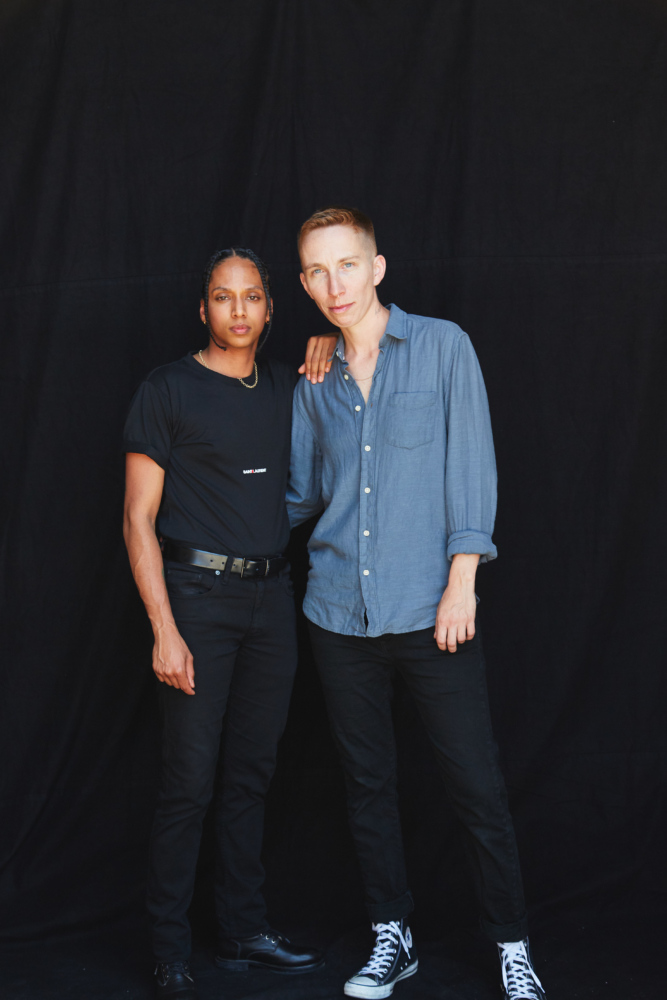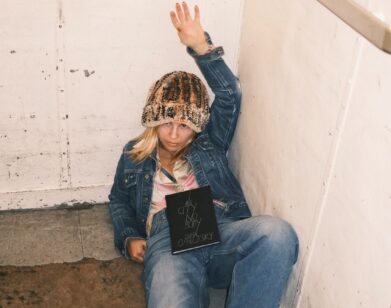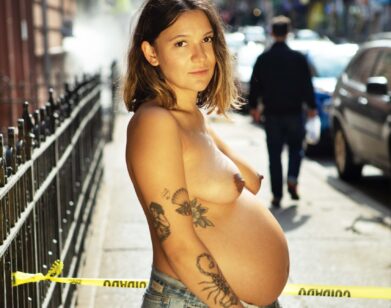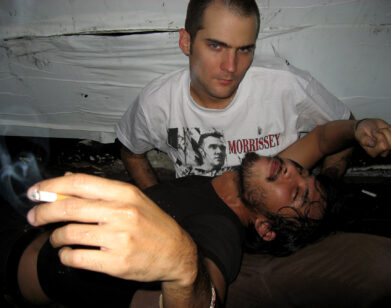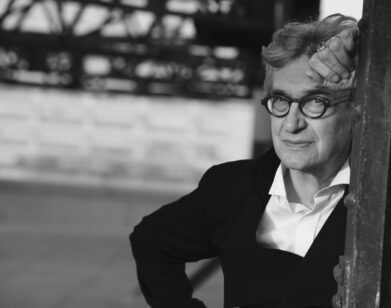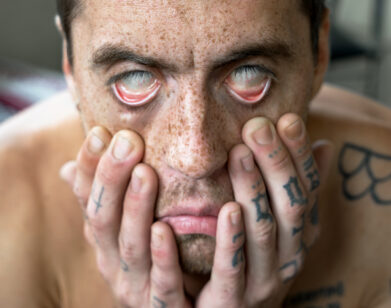Photographer iO Tillett Wright Has 9,900 Queer Portraits Down, and 100 More To Go
What would it mean to photograph 10,000 queer people across the U.S., with the goal of weaving not only a vibrant tapestry of representation across gender, race, class, and ability, but also creating an installation of those images spanning some 146 acres in downtown Washington D.C.? For the past decade, photographer iO Tillett Wright has been doing just that for his Self Evident Truths Project, and he’s almost done. What began as a defiant response to California’s Prop 8—a ballot proposition that would ban same-sex marriage—has grown into a fully realized enterprise, and a radically inclusive photographic project quite unlike anything else. With 9,900 portraits down, Tillett Wright’s immense photographic endeavor is nearing completion, with the goal of bringing the portfolio to life along the National Mall next summer. Before he snaps the final pictures, Interview caught up with Tillett Wright to find out what inspired the cross-country project, its digital future, and what it will be like to look out across an ocean of thousands of portraits.
———
MARK BURGER: You have this amazing project that’s happening: 10,000 pictures of queer people? Is that right, 10,000 portraits?
IO TILLETT WRIGHT: Yes, and it’s been nine-and-a-half years.
BURGER: Wait, what?
TILLETT WRIGHT: Yeah. Basically, I’m clinically insane. When Prop 8 came around, I was just really kind of floored on a psychic level. I was like, “What is the disconnect between these people who are voting against our rights and the people that I know?” So I decided to go out and photograph every single queer person I could get to. Which at the time, literally every person that I knew and every person that they knew that they would connect me to, amounted to 36 people. This woman from the HRC was like, “Well, this is really cool. What do you want to do now?” And I was like, “I’ve photographed every cute lesbian in Williamsburg, and now I need to really branch out from that.” I had this dream of black gay cowboys. I was like, “I just know they exist somewhere, and I need to find them and photograph them.” I quickly realized I had shot 500 people in San Francisco and L.A., and 300 people in New York. And then Eve Ensler called me, out of the blue, and was like, “I’m going to give you 10 grand, and what are you going to do with it?” And I was like, “I’m going to go to the deep South.” And she was basically like, “You have a death wish.” And honestly, I was an idiot. I thought the South was all ignorant people.
BURGER: Really?
TILLETT WRIGHT: I was so stupid when I started this project, and I learned everything through this. I had shot 1,700 people, and Eve couldn’t believe that I had done it. I went to Knoxville, Little Rock, Oklahoma City, and of course, New Orleans. But I’d also gone to Mobile, Alabama. It was crazy, the places where people were coming out. I got my gay black cowboys, I got my truckers and I got all of the total stereotypes. I was just hooked. Kids, adults, old people were coming out of the woodwork being like, “Thank you for giving us an opportunity to stand up and be proud of who we are.” I realized, to make this a consequence document, I need to shoot 10,000 people. And I need to shoot every single state in this country. And I need to make sure that it covers every single cross section that this quote-unquote community includes. Which is effectively, literally, anything other than straight. I realized that I wanted to take it to the National Mall, to the spot where the AIDS Quilt was, and where Dr. Martin Luther King Jr. gave the “I Have a Dream” speech. I wanted to erect these people, larger than life, and make the world look at us. I now have 9,900 portraits from all 50 States.
BURGER: That is unreal.
TILLETT WRIGHT: It gives me chills, because I’m now finally at this point with the production designers where they’re making mock ups of it.
BURGER: Why did you decide you want to launch the exhibition in August?
TILLETT WRIGHT: I want to do it outside of Pride season, because I don’t want it to be about anything to do with that establishment, and before kids go back to school. The goal is to have a full day of speeches and performances. I want the young pop stars who are going to get the kids to the yard, because I want them to see that they’re part of a family, and that they’re safe.
BURGER: How has the project grown or changed since you started?
TILLETT WRIGHT: I don’t ever think of this project as my art, necessarily. I think of it more as a gift to the community. It’s not about me, but unfortunately, the main growth that has happened in this project has been inside of me, which of course, as the person holding the camera, has expanded my perspective on what I’m looking at. In the beginning, I didn’t understand the difference between gender and sex. Now, realizing that, even though I was an out trans kid, even though I grew up in Manhattan, I still had so much built-in transphobia, and I still had so much built-in shame. As I’ve gone through this project, it’s become really essential that it is absolutely egalitarian. Every time we’ve done this shoot, most of the time it’s happened at events or Prides … I’ve always had an assistant with me, and I would send him out into the crowd to make sure that we got 40 to 60% people of color, or gender nonconforming people, or trans people. That became really essential to this, because those people get left out. The fundamental idea behind this was that these are the people who those laws affect. I, as the arbiter of the thing, have done so much growing and changing. So my interactions with people, and my ability to be inclusive have really expanded as I learned.
BURGER: What are you most excited to see, walking around, being in that space, with all the photos up?
TILLETT WRIGHT: I’m really excited to see young people feeling safe. Maybe they couldn’t get their family to come with them, or their family doesn’t know that they’re there, or they weren’t allowed to go. Kids, where this is something shameful for them, getting to see so many people. Being the only queer kid in a small town, or being the only queer kid in a school, is an incredibly isolating experience. And suicide attempt rates are so high amongst our community, because of isolation and rejection, I think. I want to see people start to come together. I would like to see people start to show up who are not queer, who want to support, so they can bring their queer nephew or niece or sibling, or coworker. And I want those allies to really fucking show up, and show people how dope they are.
BURGER: That is so wonderful.
TILLETT WRIGHT: I’m really excited to be almost done.
BURGER: How many more do you have to do?
TILLETT WRIGHT: I have exactly 100 spots left.
BURGER: How can people get involved?
TILLETT WRIGHT: I’m doing an open call on Monday, for those 100 people in New York. All day, from 9:30 to 4:30, basically. All they have to do is email us, and get a time, and it’s literally the fastest photo shoot. It’s completely free, they don’t have to bring anything, they don’t have to qualify themselves. If they say that they are other than straight or cis, they are welcome. We will email back with an address. They can show up, sign a release form, have their portrait taken, be back at work in twenty minutes. My setup is so stupid simple. People are always like, “Well, wait, but where’s the studio? Where’s the glam?” And I’m like, “No, you don’t understand. I have a backdrop that folds up into a backpack, and the camera, and me.” I shot Lilly Singh in two frames, in her dressing room, and she was like, “I don’t understand what just happened.”
BURGER: So is the next step 100,000 photos? A million?
TILLETT WRIGHT: Once I have 10,000 we’re going to open it up and make it selfie evident shoots, so that you can submit your own, and the whole thing is going to live online, and be ever-expanding. We’ll have this cute little guide to how to take your own self evident portrait, with a little black backdrop and literally just natural daylight.
BURGER: That’s so exciting to hear that it will live on in the digital world.
TILLETT WRIGHT: It will live online forever, and ever, and ever.
Those interested in participating can contact The Self Evident Truths Project here.

